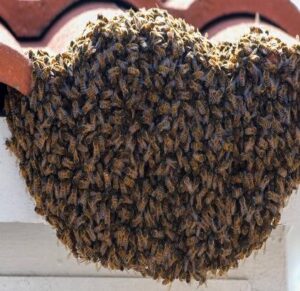The significance of bees to our ecology is well known. They help pollinate crops and maintain the planet’s general health. Even if you do not have apiphobia, discovering a colony of bees on your property might still be unsettling. After all, a single hive poses a safety risk since it may potentially house tens of thousands of bees. You must comprehend bee behavior and appropriate bee eradication techniques in order to resolve the problem. The issue is that the internet is full of disinformation and inaccuracies surrounding bee eradication, which might lead to accidents, injuries, and even environmental harm.
For this reason, we have developed an extensive bee removal FAQ guide that answers frequently asked questions and offers information on bee behavior, possible hazards, and the most effective ways to deal with bee infestations. Whether you’re dealing with a little swarm or a huge hive, this book will provide you the information you need.
Common FAQs about Bee Removal
- How Do You Know If You Have a Bee Infestation?
Indicators that indicate a problem with a bee invasion include:
-Bees buzzing over the grounds
-Beeping sounds coming from the ceiling or walls
-A rise in the quantity of spiders in and around the house
-You discover honeycomb or beehive materials within your home. Hives are often located in places of refuge like attics, walls, or trees.
- What Attracted the Bees to My House?
For a variety of factors, including the presence of food and water supplies, appropriate nesting locations, and past infestations, bees may decide to establish their home. Consider bee-resistant vent installation, caulking gaps and openings, and pruning back trees to prevent this.
- Which Methods Are the Best for Removing Bees?
The kind of bees, as well as the size and location of the hive, determine the best technique for removing them. Among the common techniques are:
Removal of Live Bees: In this method, the bees are caught while still living and relocated to a secure area. Since it doesn’t hurt the bees and significantly lowers the likelihood of new infestation, this approach is the most recommended one.
Bee Removal with Smoke: This method employs smoke to sooth bees and facilitate their removal. Although it takes a while and may not be the best option in every circumstance, this approach is secure and efficient.
Chemical Bee Removal: In this method, the bees are destroyed by using pesticides or insecticides. It damages the environment and the bees even if it is rapid and efficient. Because of this, you need to save it until last.
Can I Take Care of Bees on My Own?
We advise against doing it. When bees get irritated, they may become aggressive and sting, which can result in potentially fatal injuries. Therefore, it is recommended to work with a professional bee removal business unless you are an experienced beekeeper.
- How Much Does a Bee Removal Service Cost?
The amount and location of the infestation have an impact on the cost of bee eradication. For expert services, you should budget between $100 and $1000, and up to $2000 for a larger project.
